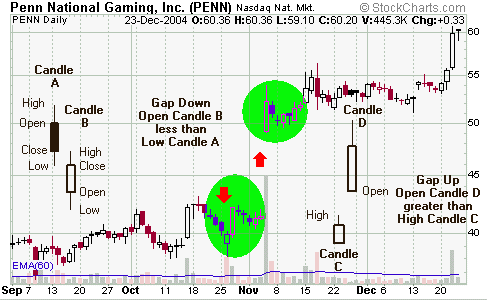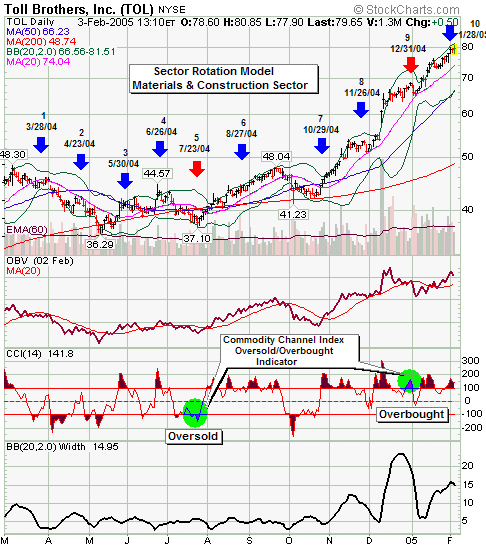TripleScreenMethod.com
The "Gap" Opening, Another Short-Term Entry for Fundamentally Sound Stocks
Richard
W. Miller, Ph.D.
I've introduced other technical buy set ups that have proved profitable in either providing low risk entries for longer term trades or trading shorter term: buying stocks making 21-day lows and buying stocks in pullback reversing with a "hammer" candlestick. Today, I want to consider another here, the "gap" opening.What makes these reports unique is their focus on the response from fundamentally sound stocks. They provide one a lower risk entry into stocks that are fueled to continue long-term bullish runs based on earnings fundamentals. A strict technician, like Gary Smith on "Bulls and Bears," would use these type buy setups on any stock, regardless of its company fundamentals, and they would work as short-term trades, perhaps with not the same probability of success. The insistence on fundamentals gives me greater confidence that TSM trades will be successful over the longer term because these stocks will be more readily supported by institutional traders.
Let's talk about opening gaps. First, there are two kinds: one where today's open falls below yesterday's low (candles A and B in the chart below) and two where today's open falls higher than yesterday's high (candles C and D). The first will be bearish if the gap remains open and price continues to fall, and similarly, the second will be bullish if it resists closing. Both will reverse their bullish/bearish tendencies should the gap actually close. In this work, I looked for down gaps that reversed and for up gaps from this week's TSM stocks investigated over the 1/1/04 to 2/24/05 time frame: 17 stocks, 288 trading days each (total of 4,896 trading days). To qualify, each gap had to be 1 percent of price in width, and the reversal gap had to penetrate yesterday's low by at least $0.06 before buying. In total, there were 40 gaps of the first type--fewer than I expected--and105 gaps of the second. Below, the down red arrow highlights a down gap reversal, and the up red arrow highlights an up gap. In these two cases, both trades were very profitable.
For buys at a down 1 percent gap reversal followed by a $0.06 penetration of the previous day's low, the percentage profit gained by selling the same-day close to the closes 1-day to 10-days later (blue data below) were calculated. For the up gap, I modeled the buy at the gap open, then looked at the percentage profit gained by selling the same-day close to the close 1-day to 10-days later (red data below). As a control, for each stock, I modeled the buy at today's open, then the same-day sale at the close or the close 1-day to 10-days later (green data below).
Obviously, the gap strategies performed better than did the control, generating a 3.25 (2.64 x control), a 1.90 (1.54 x control), and a 1.23 percent return after four days, respectively for the gap up, gap down, and control strategies. Too, 10-days into the trade there were no differences. Even the control was bullish over a 10-day period, but remember these are a group that have performed well over the last year. Note, these strategies could be improved by utilizing a stop-loss strategy. That wasn't done in this modeling.

